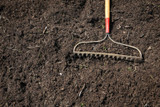Tips for Growing Organic Berries in Western North Carolina
Tips for Growing Organic Berries in Western North Carolina
When it comes to growing organic berries in western North Carolina, there are a few key tips to keep in mind to ensure a successful harvest. From choosing the right varieties to providing proper care and maintenance, here are some valuable insights for growing delicious, healthy organic berries in this beautiful region.
1. Selecting the Right Berry Varieties
Before you start planting your organic berry garden, it's important to consider the specific varieties that are well-suited for the climate and soil conditions in western North Carolina. Some popular options for organic berry growing in this region include blueberries, blackberries, raspberries, and strawberries. Be sure to choose varieties that are known for their resistance to common pests and diseases in the area.
2. Soil Preparation
Proper soil preparation is essential for growing healthy organic berries. Conduct a soil test to assess the pH levels and nutrient content of your soil. Most berries thrive in slightly acidic soil with a pH range between 4.5 and 5.5. Amend the soil with organic matter, such as compost or well-rotted manure, to improve its texture and fertility. It's also important to ensure good drainage to prevent waterlogged conditions, which can be detrimental to berry plants.
3. Sunlight and Watering
Berries require plenty of sunlight to thrive, so be sure to plant them in a location that receives at least 6-8 hours of direct sunlight per day. Adequate watering is also crucial for organic berry production, especially during the hot summer months. Consider using a drip irrigation system or soaker hoses to deliver consistent moisture to the plants, while minimizing water waste.
4. Organic Pest and Disease Control
One of the main challenges in growing organic berries is managing pests and diseases without the use of synthetic chemicals. Implementing cultural practices, such as crop rotation, mulching, and proper spacing between plants, can help minimize the risk of pest and disease problems. Additionally, consider using natural predators, like ladybugs or praying mantises, to control common pests such as aphids and spider mites.
5. Pruning and Maintenance
Regular pruning and maintenance are essential for promoting healthy growth and maximum fruit production in organic berry plants. Remove any diseased or damaged branches, and thin out crowded growth to improve air circulation and sunlight exposure. Mulch around the base of the plants to suppress weeds, retain moisture, and regulate soil temperature.
6. Harvesting and Storage
Harvest your organic berries when they are fully ripe to ensure the best flavor and nutritional value. Be gentle when picking the berries to avoid damaging the delicate fruits. Store the harvested berries in the refrigerator to prolong their freshness, and consider freezing any excess berries for future use in preserves, smoothies, or baked goods.
In conclusion, growing organic berries in North Carolina can be a rewarding and enjoyable experience, especially when you follow these valuable tips for success. By selecting the right berry varieties, preparing the soil, providing proper care and maintenance, and implementing organic pest and disease control methods, you can look forward to a bountiful harvest of delicious, healthy berries from your own backyard.
Gardener Education
-
Planting a Shade Garden in Western North Carolina
Mar 22nd 2024Planting a Shade Garden in Western North CarolinaPlanting a shade garden in Western North Carolina c
-
Spring Garden Clean-Up Checklist in Western North Carolina
Mar 3rd 2024Spring Garden Clean-Up Checklist in Western North CarolinaSpring has finally arrived in Western Nort
-
Tips for Growing Organic Berries in Western North Carolina
Mar 1st 2024Tips for Growing Organic Berries in Western North CarolinaWhen it comes to growing organic berries i
- Read more articles




